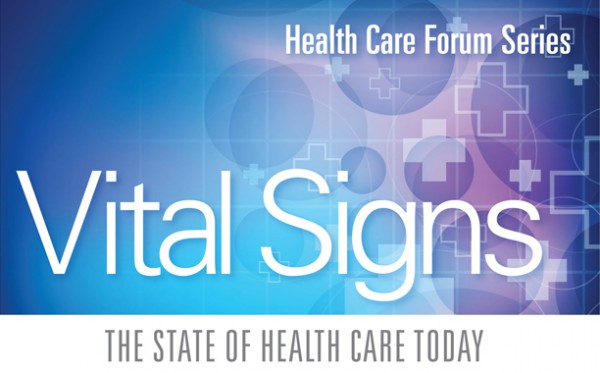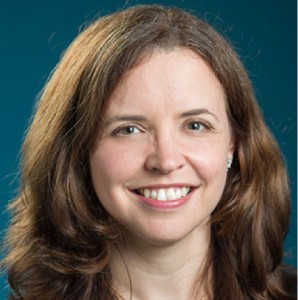Editor's Update: This interview from 2015 is for historical purposes only. If you are interested in health literacy and related topics, visit Laurie Martin's RAND bio page to view her recent publications. You may also want to check out Highmark Health's SMPL literacy initiative.

A vigorous national conversation about health care is essential to improvehealth care. That conversation should include a broad range of views — in fact, it should include all of us, because we are all affected by how well the health care system works.
The Vital Signs Health Care Forum Series events are one manifestation of that conversation. Co-sponsored by the Pittsburgh Post-Gazette and Highmark Inc., the series brings together people with different areas of expertise to discuss the quality, accessibility and costs of health care.

To carry that conversation even further, several health care experts participating in the series, and some of our own Highmark Health leaders, are generously taking the time to share additional ideas here on our digital magazine. Below is our question and answer session with Laurie Martin, a senior policy researcher at the RAND Corporation.
Don Bertschman: What led you to focus on public health as a career?
Laurie Martin: In college, I was very interested in health, but not medicine specifically. Work in my biostatistics classes introduced me to the field of public health, and the idea of working on health issues from a population perspective.
I had always seen health as integral to our lives, our well-being and happiness, our success at school and work — and public health was a natural fit that drew on my strengths in math and science and allowed me to look at the bigger picture and help shape how health gets addressed at the local, state and even national levels.
Don Bertschman: Tell us a little about your work at RAND, and where an organization like RAND fits into the health care system.
Laurie Martin: The RAND Corporation is a nonprofit, nonpartisan research organization that works to develop solutions for a range of public policy challenges. We work for both public and private entities, including the government, foundations and other organizations interested in making the world safer, more secure or healthier.
For the work I do, that means talking with patients, community-based organizations, providers, public health organizations and others to learn where they're getting stuck and where the challenges and gaps are, and then developing potential solutions for those challenges.
A good example of this is work we have been doing to support the Centers for Medicare and Medicaid Services (CMS) Office of Minority Health (OMH) in their From Coverage to Care initiative. With the implementation of the Affordable Care Act (ACA), millions of individuals have become newly insured, but CMS OMH was interested in thinking about how to support consumers after they're insured.
So part of what we were tasked with was speaking to consumers to find out what it was like for them to access health care. Where did they see challenges, what did they like or not like, trust or not trust, about the health care system?
One product that was developed as a result was A Roadmap to Better Care and a Healthier You — a free, eight-step booklet with concrete, actionable information for consumers and those who are working with them, like providers and community-based organizations. It helps consumers understand issues like: What does your insurance card look like? What do all those insurance words mean? How do you find a provider who's in your plan? What should you bring with you to your well visit and what should you ask while you're there? How do you make sure you have a provider that's right for you?
Don Bertschman: There are educational needs that have to be addressed to make the system work.
Laurie Martin: Right — and that's a good segue into health literacy, which is my passion. There are many definitions of that phrase out there, so let me start with how I look at it.
Fundamentally, health literacy is about the individual's ability to find, understand and use relevant information to guide the decisions or actions that are right for them. But there are two pieces to that. It's not just the knowledge and skills that a person has, it's also the difficulty of the information or task in a given situation — how hard do we make it for people to find, understand and use the information? When these two don't match, we run into trouble.
To me, health literacy isn't a trait — a static thing that you have or you don't — so much as it is a state. If you are sick, or a loved one gets a serious diagnosis, it becomes much harder to find, understand and use information. There's a tendency to almost "blame" the uninsured or the less educated, as if health literacy is something that certain people need to learn. But the reality is that this is an issue we all face, and the solutions to the challenges that arise due to low health literacy can be more easily addressed by taking a closer look at our health system and how we communicate.
During a well visit recently, I had to stop my doctor at one point and say, “Wait, I have no idea what you just said, can you explain that again?” She was very apologetic. But the point is that if you felt embarrassed about saying, “I don't understand what you're talking about,” you'd leave the provider's office not knowing what you needed to know. When this happens to some groups of individuals more often, like those with lower levels of education or those for whom English is not their primary language, you can see how it can contribute to health disparities.
Don Bertschman: That's a big definition of health literacy. It makes it more contextual. It would seem to mean that there are a lot more potential impacts on health literacy to watch for and address in a given situation.
Laurie Martin: Yes, there are certainly populations that experience health-literacy-related challenges more often, but it is important to realize that health literacy isn't “their problem,” it's something that can affect everybody, and in many different contexts. Because of the way we present information, we make it very difficult for people to understand medical forms and instructions, know how to take their medicine, and navigate the health care system to get needed care, for example, particularly if your care involves medical tests and referrals to specialty providers.
Don Bertschman: I read about a prototype mapping tool you helped develop that identifies geographic “hot spots” where programs to support health literacy could be particularly effective. Could you talk a little about that project?
Laurie Martin: Yes, there are some exciting developments with that. As background, there is a wealth of evidence that health literacy is very important to health and contributes to health care disparities. But it is very hard to measure, so when you're looking for information to help determine where to put resources, for example, that's always been a challenge.
Years ago, we took data from the National Assessment of Adult Literacy, which had a specific module on health literacy. Funded by the Missouri Foundation for Health, we developed a predictive model using those data. When applied to census data, we can estimate the health literacy of small areas and then map it, essentially giving decision-makers a visual of the varying levels of health literacy in their communities. After that, we overlaid health literacy and other health indicators to identify “hot spots” where low health literacy overlapped high health concerns. That really helps pinpoint where to put your resources.
To bring this up to date, about a year and a half ago a colleague said, what if we took this model and applied for National Institutes for Health (NIH) funding to do this for the entire country — and then just put it out there?
So, partnering with other colleagues, we got the funding and we have now mapped the entire U.S. down to the block group level. We also revised the model a bit, applied the latest census data and tightened some things up.
Don Bertschman: What a great tool for foundations and community groups — resources are always limited, so let's focus on where we can do the most good, right?
Laurie Martin: It really helps the return on investment argument. Even though there's so much evidence that health literacy is a huge part of health, it's still a hard sell. So the hope is that this provides one more piece of evidence and a tool for those who are looking to do something and need to make a strong argument for funding.
Don Bertschman: Plus, with better targeting from the get-go, you're likely to have better outcomes to report.
Laurie Martin: Exactly.
Don Bertschman: In your work, you're touching so many different parts of the system — consumers, providers, community organizations, all the way up to federal agencies. What insights do you have about different stakeholder roles and responsibilities when it comes to addressing health literacy or other aspects of health disparities?
Laurie Martin: Well, one point is that it is important to have all of these different stakeholders working on these issues from different angles. There are consumers who will trust and use information from their church pastor or religious leader, for example, but if they get something from the government, they told us flat out they just throw it away. But community-based or religious organizations don't have the resources, or the interest, in working on large-scale policy changes.
There are some really creative, collaborative models out there, such as literacy classes or ESL (English as Second Language) classes partnering with hospitals — they'll walk through the hospital and make a list of everything they would change. If the hospital is open to it, it can be very eye-opening and lead to good improvements: things being color-coded instead of relying only on language, or changing big words like radiology to x-ray, or simplifying maps.
But there's a need to bridge these gaps between groups and get everyone to see that we can all work together, we have overlapping interests, and that there are ways that we can leverage each other's strengths, work and resources to make accessing and engaging in care seamless for all of us.